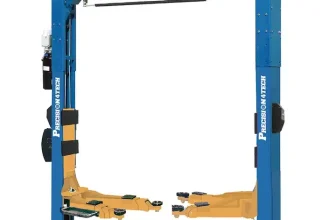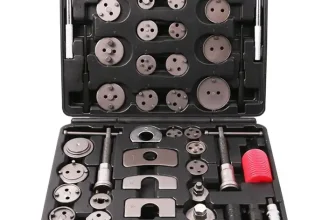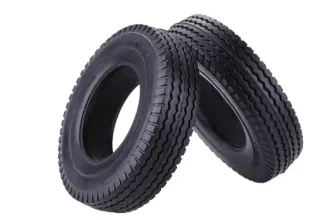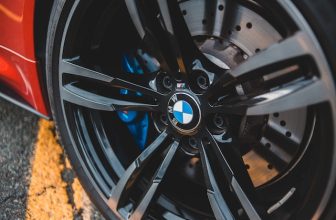A wheel balancer, also known as a tire balancer, is a tool used to balance tires and wheels. It works on the principle of uniform weight distribution, ensuring that the centrifugal force created while the wheels are in motion is even across all areas. The main aim is to avoid uneven wear and tear and to ensure a smooth drive. When the weight distribution is not uniform, it can lead to vibrations, causing discomfort during the ride and potential long-term damage to the vehicle. Properly balanced wheels can also extend the longevity of the car’s suspension system. If you’ve ever felt a shaking steering wheel at higher speeds, you’ve likely experienced the negative implications of an imbalanced wheel. Thus, wheel balancers are an essential tool for maintaining your vehicle’s performance and your driving comfort.
Importance of Wheel Balancing
Wheel balancing is a crucial part of vehicle maintenance that can’t be overlooked. Unbalanced wheels could lead to uneven tire wear, vibration while driving, stress on the vehicle, and poor fuel economy. By ensuring that the weight of the vehicle is equally distributed to all its wheels, we can avoid these issues. Moreover, balancing the wheels helps in providing a smoother ride by reducing bouncing and vibration, which in turn offers a more comfortable driving experience.
The benefits of wheel balancing extend beyond a comfortable ride. It greatly contributes to the longevity of your tires and the entire wheel assembly, making it cost-effective in the long run due to reduced wear and tear. Balancing also enhances the performance of the vehicle by enabling more effective control and handling. Thus, emphasizing the need for regular wheel balancing check-ups and ensuring your wheel balancer’s effectiveness becomes paramount. In essence, wheel balancing is an indispensable routine for any vehicle owner aiming for optimal performance and durability of their car.
Types of Wheel Balancers
Static Balancer
Description and Design
The Static Balancer, also known as gravity wheel balancer, is one of the simplest and oldest types of wheel balancers. Its design is quite straightforward: the wheel and tire assembly is placed on a spindle that’s vertically centered on a level and stable base. The heaviest part of the wheel will naturally fall to the bottom due to gravity, indicating an imbalance.
The spindle is often supported by two cone-shaped holders or ‘cones’ that are adjustable to fit the size of the wheel hub. These cones ensure that the wheel and tire assembly is properly centered on the spindle to accurately reflect the imbalance. Many static balancers are portable and do not require a power source, making them easy to use in a variety of settings.
In terms of design, static balancers are typically made of robust materials to withstand the weight of the wheel and tire assembly, usually metals like steel or aluminum. They can accommodate a wide range of wheel sizes and are often adjustable to suit different types of vehicles.
The static balancer’s simplicity is its primary strength, although it’s primarily designed to identify and correct vertical imbalances. It might not be the best option for modern, high-speed vehicles or wheels with complex designs, as it may not detect the more minute imbalances that these vehicles are susceptible to. Nonetheless, for general use and vintage cars, the static balancer remains a highly effective and reliable tool.
Advantages and Limitations
The advantages of using a static balancer are numerous. Firstly, it is considered the most accurate type of wheel balancer. For this reason, static balancers are typically used on vehicles that require precise wheel balancing, like high-performance sports cars. Moreover, static balancers are simple in design and operation, making them easy to use. They are also usually the least expensive type of wheel balancers, making them a good choice for vehicle owners on a budget.
However, static balancers come with their share of limitations. One of the primary drawbacks is that they only balance the wheel in one plane—vertically. As a wheel rotates in two planes—both vertically and horizontally—this means a static balance may fail to address an imbalance in the horizontal plane. This could lead to vibration while driving, particularly at high speeds. Also, because static balancers require the wheel to be removed from the car for balancing, they are often not the fastest option for correcting imbalances.
Dynamic Balancer
Description and Design
The Dynamic Wheel Balancer is a more sophisticated type than its Static counterpart. Designed to analyze both static (vertical) and dynamic (lateral) wheel balancing issues, it ensures even more precise measurements and adjustments to your vehicle’s wheels. This balancer is equipped with advanced technological features. These include sensors that help in gathering data as per the conditions and a display screen that illustrates weight positioning and an indication of unbalanced sides.
In its operational design, a dynamic balancer secures the wheel and tire assembly onto a machine that spins it at a high speed to closely simulate road travel conditions. Mass imbalances are detected in two planes; the radial (up and down motion) and lateral (side to side motion). This complex analysis helps to identify minor issues that could significantly impact driving comfort and tire lifespan, making it a preferred choice for balancing more advanced or sensitive wheel assemblies.
Advantages and Limitations
The dynamic wheel balancer is one of the most commonly used types of wheel balancers and offers several key advantages. Firstly, it’s every bit as precise as it’s versatile. Dynamic balancers are able to identify both static and dynamic imbalance in wheels which can lead to uneven tire wear and performance issues. Secondly, most of these machines are built with modern technology, often including digital readouts and automatic data entry, which makes the balancing process a lot easier and efficient.
However, there are also some limitations to consider. One of the main drawbacks of dynamic wheel balancers is that they can be quite expensive, especially when compared to other types like the bubble balancer. The cost often reflects the high level of technology integrated into the machine, making it a significant investment. Moreover, given their complexity, they require more training to operate effectively than a simpler static balancer. These machines also generally take up more space due to their size, which can be a limiting factor in smaller garages or workshops.
Bubble Balancer
Description and Design
The Bubble Balancer, also known as the manual or off-car balancer, is another prevalent type of wheel balancer. It is called a bubble balancer because it involves the use of a bubble level, a small tool that contains a liquid and an air bubble. When the wheel is in balance, the air bubble will sit in the center of the level.
The design of a bubble balancer is relatively simple. It consists of a vertical rod on a flat, leveled stand that can spin freely. A cone is placed onto the rod, and the wheel is then put onto the cone using the wheel’s center hole. When the wheel is perfectly horizontal, it indicates that the wheel’s weight is distributed evenly across its radius.
The bubble balancer’s simplicity is its main selling point. There are no electronic components involved, making it straightforward to understand and operate. However, it requires a good understanding of physics and geometry to balance a wheel correctly, making it a favorite among DIY enthusiasts and experienced mechanics.
With its simple design made up of minimal moving parts, the bubble balancer tends to be highly durable and less prone to mechanical failures. It can withstand heavy loads and rough handling in a variety of environments. It’s an easy-to-use, compact, and portable tool that can be used for balancing purposes in virtually any setting.
Advantages and Limitations
The Bubble Balancer, despite its simplicity, possesses certain advantages which make it a cherished tool in some settings. Due to its straightforward design and function, it’s economical and easy to use. It also doesn’t require a power source, making it a suitable option for on-the-go or distant operations. It’s optimal for jobs requiring simplicity, as it focuses mainly on balancing the wheel statically with no moving parts involved.
However, as technology advances, the Bubble Balancer contains a few limitations. The accuracy of this tool is not as precise as its digital counterparts and it’s not typically recommended for larger, modern, or performance vehicles due to its inability to detect dynamic imbalances. Furthermore, it’s a more time-consuming process compared to using machines, as it requires manual adjustment of the wheel until the bubble stabilizes. Despite its limitations, the Bubble Balancer retains its value in scenarios where simplicity and portability supersede the need for advanced features and speed.
Road Force Balancer
Description and Design
The Road Force Balancer is a sophisticated wheel balancer that simulates the road conditions to identify not just the tire’s balance, but also the force variation and the run-out of the wheel assembly. This machine comprises an outer drum surface which moves against the tire to mimic road conditions and apply road-force to the wheel. A sensor integrated into the machine reads variations and imbalances under these conditions, providing a comprehensive picture of tire performance.
Unlike other balancers, the Road Force Balancer also identifies conditions like flat spots and sidewall stiffness variations which can cause vibrations, adding an extra layer of precision to wheel diagnostics. It is typically a bigger unit compared to the other types and includes options for automatic positioning, measuring, and weight placement. Despite its complex design and technology underpinning its operation, it is relatively user-friendly thanks to interactive interfaces and automated processes that aid the user throughout the wheel balancing process.
Advantages and Limitations
The Road Force Balancer, also known as a force variation balancer, is lauded for its precision and diagnostic proficiency. This high-tech tool not only balances the wheel, but also measures the forces of rolling resistance and variation in the tyre-wheel assembly, providing a comprehensive diagnostic result. The use of a roller simulates the pressure and resistance experienced on the road, adding an extra layer of accuracy. Its ability to detect issues such as wheel rim damage or tyre sidewall stiffness makes it invaluable in the world of wheel servicing.
However, such proficiency does come with its own limitations. Road Force Balancers are high-end instruments and, as such, the cost can be prohibitive for some garages or individuals. Additionally, these sophisticated machines require an experienced technician to interpret and act on the results. Without proper training, it’s possible to misread the data given and incorrectly rectify the issue, leading to potential further complications.
Lastly, Road Force Balancers are bulkier than other types and require a larger space to operate, making it a less feasible option for smaller workshops or home garages. Despite these drawbacks, if one prioritizes precision and comprehensive data, investing in a Road Force Balancer might still prove to be a wise decision.
Factors to consider when choosing a Wheel Balancer
Vehicle Type
When choosing a wheel balancer, it’s vital to take into account the type of vehicle it will be used for. The design, size, weight, and balance requirements of wheels can vary significantly between different vehicles. Smaller, lighter vehicles such as compact cars and motorcycles can often be served well by simpler, more compact balancers such as static or bubble balancers.
On the other hand, heavier and larger vehicles like trucks, vans, or SUVs usually require more comprehensive wheel balancing. Their oversized and heavy-duty wheels can experience more complex balance issues that require a dynamic or road force balancer for accurate and efficient correction.
Specialty or high-performance vehicles may also have unique wheel balancing needs, often requiring precision equipment capable of handling larger wheel sizes or more specific balance requirements. Wheel balancers designed for these vehicles are typically more advanced and offer features like road force measurement or dynamic balancing.
In short, the type of vehicle greatly influences the choice of wheel balancer. Understanding the specific needs of your vehicle will ensure you choose a wheel balancer that provides the best possible performance, longevity, and ride comfort.
Frequency of Use
The frequency of use is a crucial factor to consider when choosing a wheel balancer. If your vehicle is used heavily on a daily basis, the tires are more prone to wear and unbalance that will need continuous maintenance. This will require a professional-grade balancer equipped to handle repeated use without faltering in performance or accuracy. On the other hand, if you drive infrequently or only on smooth roads, you may not need as frequent balances, thus a simpler and lower-cost wheel balancer may be sufficient for your needs. Considering your daily mileage, road conditions, and how often you experience vibrations can help you understand your wheel balancing needs better. Balancing for high-frequency use also helps preemptively deal with potential wheel problems, reducing the need for expensive repairs in the future.
Price and Budget
When selecting a wheel balancer, understanding your price range and setting a realistic budget is crucial. Wheel balancers come at various price points, influenced by factors like their complexity, brand, and additional features. Cheaper models may be adequate for simple, infrequent jobs while more expensive ones offer higher precision and additional functionalities that could quicken and improve your task.
A wheel balancer is a long-term investment, so considering its durability and longevity versus its cost could affect your budgeting decisions. Inexpensive wheel balancers might be tempting, but these may lack the strength and efficiency needed for regular usage or larger wheels, potentially leading to higher costs in the long run. It is advisable to consider the price-performance ratio as a basic factor in making your decision.
Lastly, it’s also key to consider the maintenance and operational costs. Balancers with more complex features could potentially cost more in terms of time, training, and money to keep up with repairs and replacements. Always consider your financial capabilities and intended use before committing to an investment. Remember, the most expensive wheel balancer isn’t necessarily the best for your specific needs. Always choose one within your budget that satisfies your requirements.
Space Availability
The availability of space within the establishment or garage can greatly influence the type of wheel balancer one should choose. Some wheel balancers can take up considerable room due to their size and design. For example, the dynamic and road force balancers are typically larger and less suited for compact spaces. On the other hand, static and bubble balancers are smaller in design, which makes them a good fit for garages with limited space. It’s critical to measure the available space before choosing a wheel balancer to ensure it will comfortably fit within your setup. Keep in mind that you will also need space to maneuver around the machine safely and efficiently.
The process of Wheel Balancing – A brief overview
Process for Static Balancing
Static balancing is the simplest type of wheel balancing. Its primary focus is to balance the weight distribution around the wheel’s central axis. The process begins by mounting the wheel on a vertical, non-moving spindle. The heavier side of the wheel will naturally fall to the bottom.
The technician then adds weight to the lighter side, normally in the form of small lead weights, until the wheel can remain stable in any position on the spindle. This indicates that the wheel’s weight is evenly distributed, and it is now balanced statically. It’s a straightforward procedure that can be quickly completed.
This process only accounts for imbalance in one plane (vertical). Therefore, while it can effectively resolve some imbalance issues, it may not address all, particularly in wider wheels which can have more complex balancing needs. Thus, static balancing is usually complemented with dynamic balancing in most auto repair shops.
Process for Dynamic Balancing
Dynamic balancing involves determining vehicle wheel imbalances in more than one plane. This process requires specialized equipment, designed to account for both the static and dynamic forces acting on a wheel.
Initially, the wheel is placed on the balancer’s spindle through its center hole. Once secured, the machine spins the wheel at high speed to identify any imbalances. The balancer then measures vibrations in two planes: the vertical (up and down motion or static imbalance) and the horizontal (side to side motion or dynamic imbalance).
Using algorithms to decipher the data, the balancing machine calculates the exact location and the amount of weight needed to compensate for the imbalance. Technicians then affix weights to the inner and outer sides of the wheel to counteract the imbalance. After the weights are attached, the wheel is again spun on the machine to verify balance.
Dynamic balancing offers a more precise balance over static balance and is highly recommended for wheels and tires above 17 inches in diameter as it ensures optimal ride comfort, tire wear, and extended life of the wheel assembly and related components.
Process for Bubble Balancing
Bubble balancing, also known as off-car balancing, begins with the wheel and tire assembly being removed from the vehicle. The assembly is then placed on the bubble balancer’s centering cone. The machine uses the natural effect of gravity to equalize weight distribution. The balancer has a plumb bob and a graduated circle that aligns with the plumb line.
The wheel assembly is adjusted until the bubble center in the sight glass rests at the middle of the circle. This denotes that the wheel’s radial and lateral balance is optimum. If the bubble is off-center, it signifies an imbalance. In this case, adhesive weights are added to the appropriate location on the wheel to compensate for the difference. The process is repeated until the bubble is centered, indicating that the wheel is properly balanced.
This technique is often employed for classic cars or wheels with unique configurations. It is a straightforward and economical method, however, it doesn’t account for on-vehicle factors such as brake or wheel run-out. Thus, it may not be the optimal solution for modern high-speed and high-performance vehicles.
Process for Road Force Balancing
Road Force Balancing is widely considered as one of the most efficient methods of wheel balancing, bringing into account both static and dynamic forces and simulating real-world driving conditions.
The process starts with the mounting of the wheel and tire assembly onto the Road Force Balancer machine. This machine comes equipped with a roller applying pressure, simulating road force on a vertically spinning wheel and tire assembly to measure their combined uniformity. Captivatingly, it can measure both radial and lateral tire forces and provide a comprehensive solution to identify various issues like runout, hard spots, or tire pull.
The balancer machine then uses these sensed forces combined with other measurements to compute and display an accurate 3D model representation of the tire and wheel assembly. This representation is essential in assessing the necessity and amount of required balancing weights.
To work out imbalance corrections, the machine prompts a recommended location for adding weights and even suggests a tire to rim match-mounting method that could minimize the imbalance. After applying the corrections suggested by the machine modeling, a further round of testing is then performed for verification, ensuring that the wheel and tire assembly is balanced aptly.
The Road Force Balancer is notably sophisticated, yet it requires operation knowledge and experience for accurate analyses and corrections. The result of this thorough process is an exceptionally smooth and comfortable drive, improving the overall lifespan of the wheel-tire assembly.
Impact of Wheel Balancing on Vehicle Performance
Conclusion
In the past sections, we’ve delved into the importance of wheel balancers and their varied types. Wheel balancing optimizes tire wear, enhances vehicle safety, and improves ride comfort. To achieve this, different wheel balancers come into play. These include the static balancer, which balances the tire in a single plane, and the dynamic balancer, which considers both the static and couple forces for a two-plane balance.
There’s also the bubble balancer, a simpler device largely replaced by advanced technology, yet it retains usefulness for some applications. Last but not least, we detailed the road force balancer, a sophisticated machine used to detect both balance and force variation of a tire and wheel assembly.
Remember that choice of balancer depends on several factors such as the type of vehicle, frequency of use, budgetary considerations, and available space. Each type of balancer has a specific balancing process and potential impact on vehicle performance.
Choosing the correct wheel balancer and correctly implementing wheel balancing can have substantial benefits. It leads not only to smoother commutes and extended tire life but also contributes to safer driving conditions. Awareness and proper application of this vehicle servicing aspect is indispensable for all car owners and service providers.







